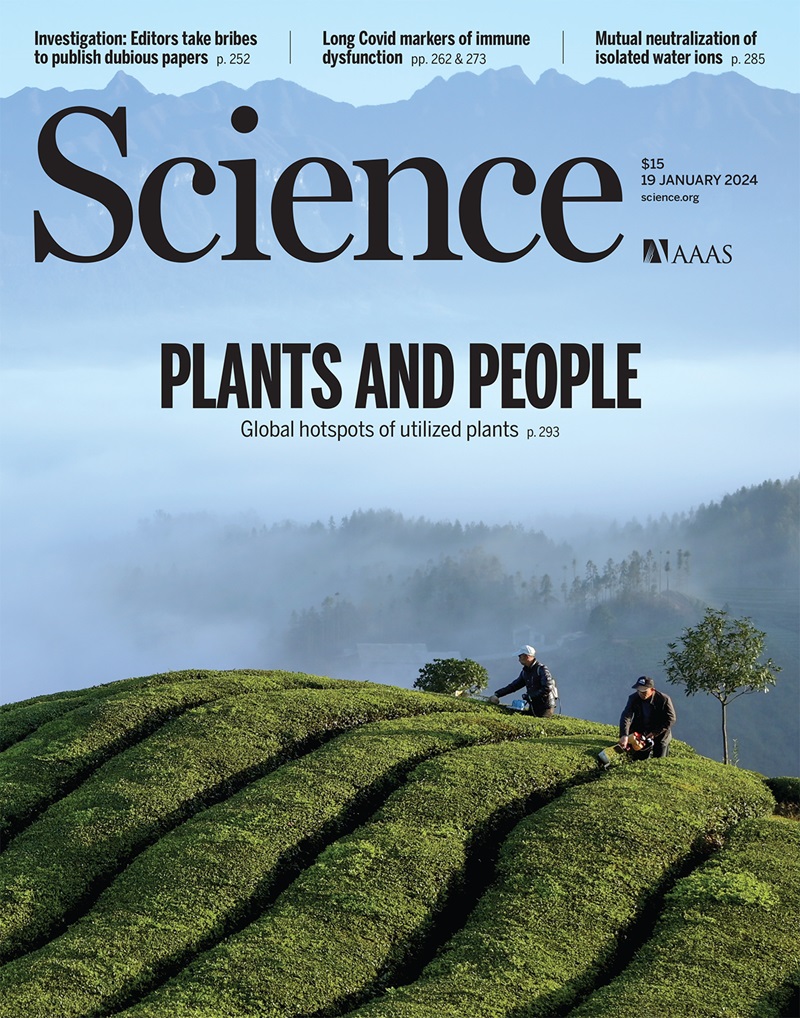纳米粘合剂推动了丝网印刷柔性热电技术的发展。
IF 45.8
1区 综合性期刊
Q1 MULTIDISCIPLINARY SCIENCES
引用次数: 0
摘要
有限的灵活性、复杂的制造工艺、高成本和性能不足是限制可穿戴电子产品和其他高端冷却应用的柔性无机热电材料的可扩展性和商业化的主要因素。我们开发了一种创新的、具有成本效益的技术,它集成了溶剂热、丝网印刷和烧结技术来生产无机柔性热电薄膜。我们的可打印薄膜,包括bi2te3纳米板作为高度取向的颗粒和纳米棒作为“纳米粘合剂”,具有优异的可打印薄膜热电性能,良好的柔韧性,可大规模制造性和低成本。我们构建了由可印刷的n型bi2te3薄膜和p型Bi0.4Sb1.6Te3薄膜组装而成的柔性热电器件,其归一化功率密度为>.3 μW cm-2 K-2,在丝网印刷器件中居最高水平。此外,该技术可以扩展到其他无机热电薄膜系统,如Ag2Se,显示出广泛的适用性。本文章由计算机程序翻译,如有差异,请以英文原文为准。
Nanobinders advance screen-printed flexible thermoelectrics
Limited flexibility, complex manufacturing processes, high costs, and insufficient performance are major factors restricting the scalability and commercialization of flexible inorganic thermoelectrics for wearable electronics and other high-end cooling applications. We developed an innovative, cost-effective technology that integrates solvothermal, screen-printing, and sintering techniques to produce an inorganic flexible thermoelectric film. Our printable film, comprising Bi2Te3-based nanoplates as highly orientated grains and Te nanorods as “nanobinders,” shows excellent thermoelectric performance for printable films, good flexibility, large-scale manufacturability, and low cost. We constructed a flexible thermoelectric device assembled by printable n-type Bi2Te3-based and p-type Bi0.4Sb1.6Te3 films, which achieved a normalized power density of >3 μW cm−2 K−2, ranking among the highest in screen-printed devices. Moreover, this technology can be extended to other inorganic thermoelectric film systems, such as Ag2Se, showing broad applicability.
求助全文
通过发布文献求助,成功后即可免费获取论文全文。
去求助
来源期刊

Science
综合性期刊-综合性期刊
CiteScore
61.10
自引率
0.90%
发文量
0
审稿时长
2.1 months
期刊介绍:
Science is a leading outlet for scientific news, commentary, and cutting-edge research. Through its print and online incarnations, Science reaches an estimated worldwide readership of more than one million. Science’s authorship is global too, and its articles consistently rank among the world's most cited research.
Science serves as a forum for discussion of important issues related to the advancement of science by publishing material on which a consensus has been reached as well as including the presentation of minority or conflicting points of view. Accordingly, all articles published in Science—including editorials, news and comment, and book reviews—are signed and reflect the individual views of the authors and not official points of view adopted by AAAS or the institutions with which the authors are affiliated.
Science seeks to publish those papers that are most influential in their fields or across fields and that will significantly advance scientific understanding. Selected papers should present novel and broadly important data, syntheses, or concepts. They should merit recognition by the wider scientific community and general public provided by publication in Science, beyond that provided by specialty journals. Science welcomes submissions from all fields of science and from any source. The editors are committed to the prompt evaluation and publication of submitted papers while upholding high standards that support reproducibility of published research. Science is published weekly; selected papers are published online ahead of print.
 求助内容:
求助内容: 应助结果提醒方式:
应助结果提醒方式:


